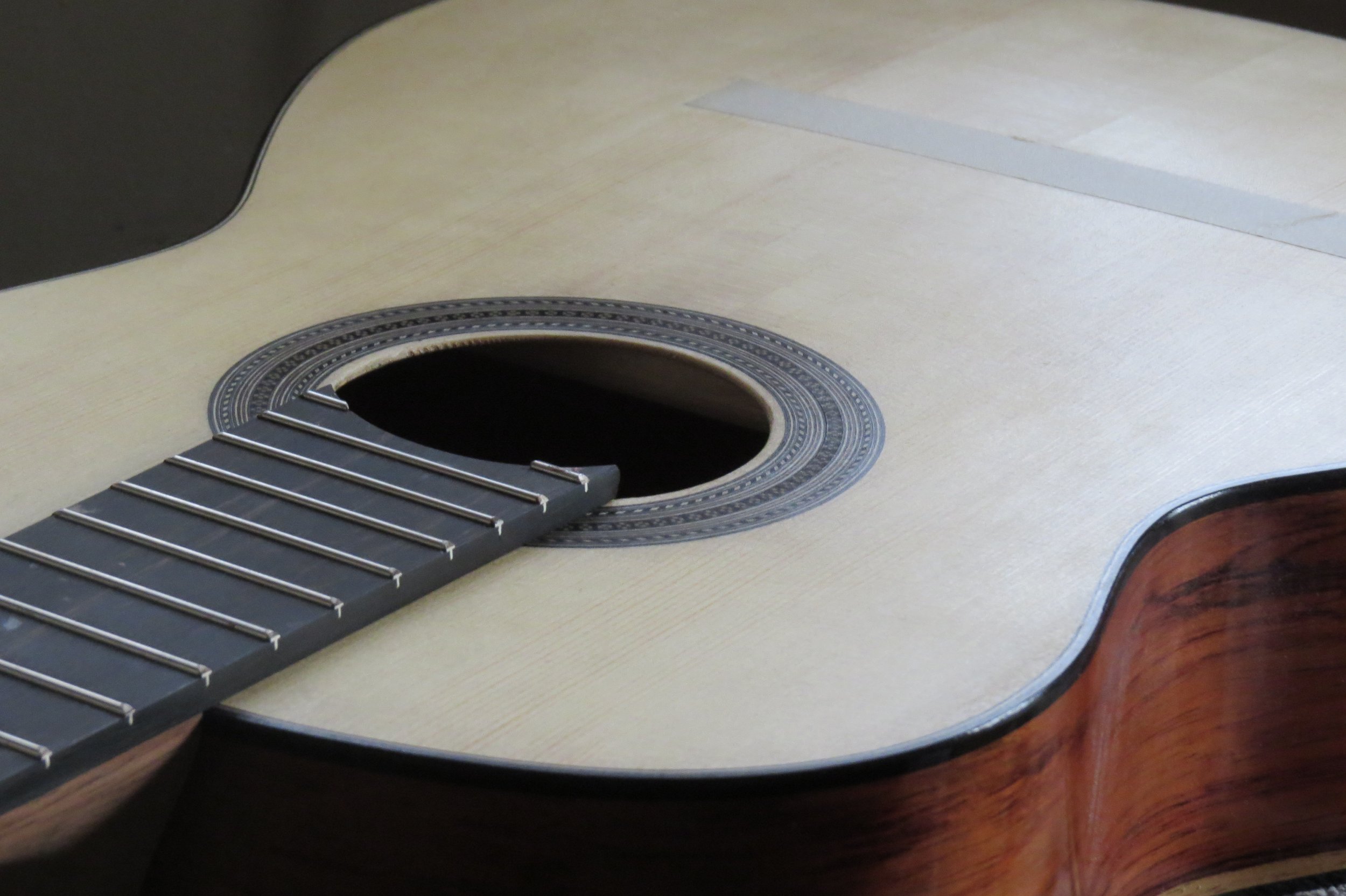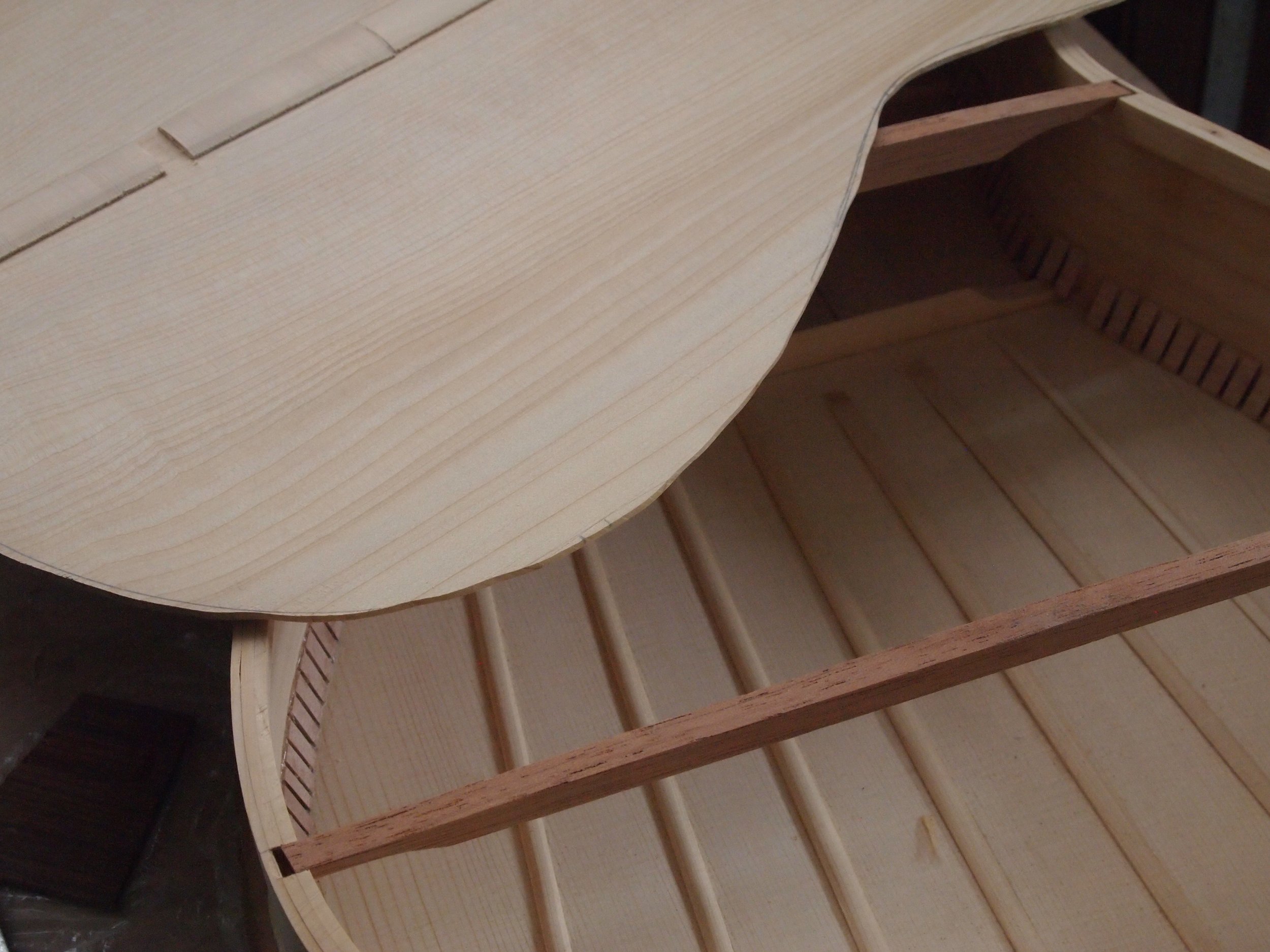I've been thinking about the subject of constantly improving as a guitar maker. This line of thought was prompted by a podcast I listened to recently, in which a guitarist talked about her journey of improving as a guitarist, attending conservatories, masterclasses and competitions etc and she spoke a lot about receiving feedback. I noticed many parallels to my career making guitars, and I guess it's similar for anyone trying to master an art/craft.
An upcoming guitar, currently being polished
Seeking out and interpreting feedback is an important part of making guitars. There are several different sources of feedback, each with different priorities and backgrounds, providing different and useful viewpoints. I have sought feedback from other guitar makers, guitar players - both amateur and professional - as well as guitar shops/dealers. For me, and I'm sure the same is true for many artists and musicians, I'm my harshest critic.
I think a good first step to improving at any skill is to have a clear picture of what you're aiming for. I think this is one reason guitar making is quite difficult, because the main goal is the sound, which is something intangible and quite subjective. Other goals in guitar making are easier to imagine, such as having excellent workmanship and varnishing skills, building up a collection of good quality, seasoned woods, creating an aesthetically good looking design/personal style of working etc. But the sound is definitely the most important and alluring aspect. Eventually, all other elements, workmanship, design, playability etc will or should be mastered and all that remains to focus on is the sound. If you track a guitar maker's career, in the early years the design/bracing of their guitars will probably vary quite considerably, but as they mature they will probably find the general sound they are looking for, and focus on one or two designs, fine tuning their sound for the majority of their career.
Feedback from players, makers and dealers is important, and from each group it's different. A good player can really put a guitar through its paces and say if they like it or not, and whether or not there's something lacking. Sometimes a guitarist won't like something, but won't be able to say why. Sometimes they’ll say a guitar is good, in order to be polite, but they're clearly not feeling it. This is why I consider interpreting feedback to be a sort of art. For example, a player might think the action is too high, when really the neck is poorly shaped and uncomfortable, so it's the job of the guitar maker to find out what the real cause of the problem is. Regarding sound it should be borne in mind that a player's ear might be tuned to whatever guitar they already have. Naturally, learning from other guitar makers is crucial because they can not only point out issues, but give real, practical solutions and advice on how to obtain a better sound. It is also interesting to get feedback from guitar dealers, because they see so many guitars, and therefore likely have their ear well tuned in, they can give hopefully accurate assessment of a guitar maker's guitar, and notice the fine details to be improved.
Having a well tuned-in ear is really important as a guitar maker. I’ve found it difficult to do in the past, as most of the work is in the workshop at the workbench, but activities such as going to guitar societies, concerts, going to a guitar shop/dealer and trying lots of guitars, have proved crucial for getting my ear attuned to what a good guitar sounds like, what the possibilities of the guitar are and what I want my guitars to sound like. I went to a guitar society meeting a few months ago, and enjoyed discovering the sound of a particular Christopher Dean guitar. It was a deep, large, luxurious sound. Although I don't want to emulate that sound on my own guitars, I did really like it and it slightly expanded my understanding of the sound of the classical guitar. When I went to a guitar making competition last summer, some of the guitars, in terms of volume, power and protection, exceeded what I thought was possible with traditional bracing. Another option for a guitar maker would be to find a guitar with an undoubtedly excellent sound, keep that guitar in the workshop and use it as a reference point.
The possibilities of the guitar’s sound are really vast even within the realms of traditional bracing, let alone lattice braced guitars, double top guitars and other potential future innovations. My upcoming guitar which is being polished now, is borne out of a meeting with guitar maker Paul Fischer. Over a year ago now, I showed him a guitar as well as a plan of the bracing. We talked it through together and agreed on some changes. I'm really looking forward to hearing this guitar. And so the guitar making journey and quest to find the ideal sound continues.

